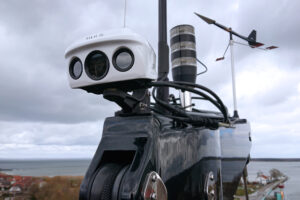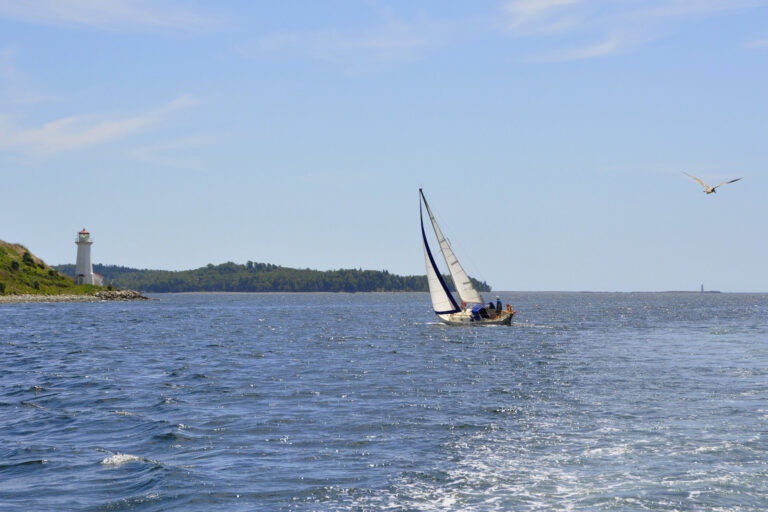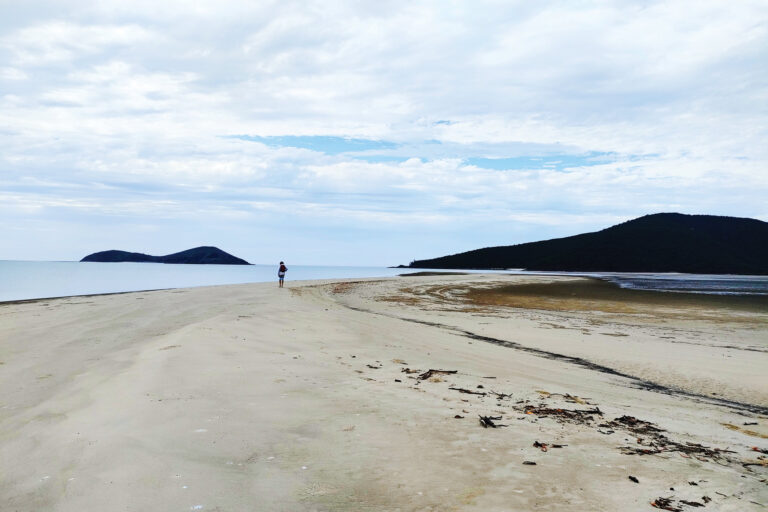
solar cooker 368
We’d just set foot on board Sugata, our Hans Christian 38, after a wet and wild dinghy ride from the beach at Bahia Tenacatita, south of Puerto Vallarta on Mexico’s mainland coast. After quickly showering off the salt water, my husband, Todd, and our 10-year-old daughter, Sequoia, had an important question for me: “What’s for dinner?” they chorused.
Luckily, I’d planned ahead. That morning, before we’d left for the beach, I’d put together my “tamale” pie-beans, salsa, vegetables, and cheese in a cornmeal casserole-and set it out on deck in our solar cooker. After an afternoon in the sun, our evening meal was ready and waiting for us.
I’d never cooked using the rays of the sun before we moved aboard Sugata to prepare for our cruise to Mexico, but I was inspired to try using one by my mom, who for years has been using the Sacramento, California, summer sun to cook meals at home.
Solar cookers are simple devices; most feature either reflective panels or a covered box to catch and focus the sun’s rays. Cooking takes place in a black pot surrounded by glass or a plastic bag. You can easily build your own from a kit or buy one ready-made. I researched them online before purchasing one at Solar Cookers International (www.solarcookers.org/catalog). Prices range from $25 to about $300, and most are very compact and easily stowed. My mother uses the SOS Sport ($197) at home, but it was too bulky for us to carry aboard. We considered the Solar Chef’s Kit ($47), which features a reflector made of cardboard and foil, but we wanted something that would withstand the marine environment. Ultimately, we chose the HotPot ($123) because its durable aluminum reflector folds flat for easy stowing. Easy storage and make-ahead meals aren’t the only solar-cooker advantages: They save stove fuel, don’t heat up the cabin when you cook, and they’re good for the environment.
Before we left the San Francisco Bay area, I tested the cooker at the dock, beginning with simple things like rice and potatoes. Passersby would inevitably stop, scrutinize the solar cooker, and ask, “What is that thing?”
By the time we reached Mexico, my solar-cooking repertoire had expanded. Not only is our cooker good for potatoes, rice, and grains; one-pot meals like chili and vegetable stews are also easy to make in it, as is corn bread, another one of our favorite dishes.
As we drew closer to the equator and the sun was more directly overhead, the cooker performed better. Some days, our teak decks got so hot that we thought we could just cook on them! One sunny afternoon, we did an experiment with quesadillas prepared on deck, which we dubbed “deckadillas.” Some we placed in a pan right on the hot teak; we placed others in a pan inside the reflective panel of our solar cooker. While we knew the ones in the panel would cook faster, we were surprised to find that those we put directly on the deck didn’t melt at all. It wasn’t as hot as it felt!
Solar cooking on board isn’t without its challenges. When we’re at anchor, I have to guess which way the boat will swing to try to predict the angle of the sun. A couple of times when the wind shifted to come from an unexpected direction, we came back to Sugata to find that the cooker had been in the shade for most of the day. This isn’t a problem when you’re tied up at a dock or if you’re on board and can check on the cooker from time to time and move it if necessary.
Another consideration is the wind itself. Though the cooking pot and glass container are fairly heavy, the reflective panel is light and has a lot of surface area. On breezy days, I position the cooker against our dodger or another wind break.
To me, such challenges as guessing the sun’s angle and coping with wind are part of the fun of solar cooking. There’s something extremely satisfying about sitting down to a solar-cooked meal. You feel clever, environmentally friendly-and you even begin to imagine that the food you’re eating is healthier.
Tamale Pie
1 egg, beaten
1 cup milk
1 tablespoon sugar
1 teaspoon salt
3/4 cup cornmeal
1 onion
1 green pepper
1 tablespoon butter or oil
2 teaspoons chili powder
1 teaspoon cumin
1 14-ounce can kidney, black, or
pinto beans, drained
1 14-ounce can corn
1 14-ounce can stewed tomatoes
Prepared red or green salsa, to taste
Grated cheese, to taste
Hot sauce, to taste
Solar-cooker method: Combine beaten egg and milk. Gradually add sugar, salt, and cornmeal, mixing until smooth. Place mixture in your ungreased solar cooking pot and set the cooker in the sun. Leave until mixture starts to thicken and set, about 20 minutes depending on solar-cooking conditions. If you have a stove, saute onion and green pepper in oil or butter; add chili powder and cumin. If you don’t have a stove, just combine these ingredients. Add beans, corn, and stewed tomatoes to veggies and mix well. Retrieve the cooking pot with the cornmeal mixture from your solar cooker. Pour the vegetable-and-bean mixture over the top of the cornmeal. Top with salsa. Return cooking pot to solar cooker. Leave for 90 minutes to 3 hours, depending on cooking conditions. You’ll smell the tamale pie as it gets close to being done. Serve with grated cheese, hot sauce, and cold beer. Serves four.
Oven method: Follow directions above for cornmeal mix. Pour into a greased, bowl-shaped casserole and bake at 350 F for about 20 minutes or until it starts to thicken and set. Remove from oven. Saute veggies and pour over set cornmeal mixture as above, top with salsa, and bake at 350 F for about 30 minutes. Serves four.








